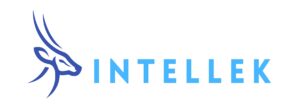Turn One-And-Done Training Into Long-term Learning
Did you know that within just 24 hours of a training session, studies show up to 70% of key concepts and ideas can be forgotten? Over a week, this figure jumps to a massive 90%! Despite investment in employee training and development, companies and personnel alike struggle with how to ensure that information transfer sticks, policies, and frameworks aren’t misunderstood, and that both hard and soft skills are retained for workplace excellence. But it doesn’t have to be this way...
In this article, we will unpack key methods for getting your training to stick, equipping both management and personnel alike with the tools to bridge the chasm between knowing and doing across teams. You will discover research insights into the science of spacing training periods, as well as application case studies demonstrating real-world workplace impacts. Just as your first trip to the gym won’t lead to lifelong strength, this write-up reveals how to turn all your carefully designed education sessions into gains in employee capability—no forgotten initiatives, wasted dollars, or stalled development. So stay tuned as we break down how you can conquer the forgetting curve once and for all, ensuring your organization prospers from retained knowledge for years to come. The difference between short-term remembering and long-term reinforcing is immense—let’s explore how to achieve those exponential, compounded gains together.
Fighting The Forgetting Curve With Reinforcement
There are concrete strategies for fighting the “forgetting curve” and ensuring that training and learning translate from primer to practice. By employing a mix of reinforcing techniques—from refreshers to coaching, to application, to self-reflection—organizations can dramatically boost knowledge retention rates over weeks and months following an initial learning session. So while traditional one-and-done training fails to change behaviors, properly reinforced learning gets cemented, improving performance and preparedness.
What Is Reinforcement Learning?
Reinforcement learning in the context of corporate training refers to methods employed after the initial learning experience to help reinforce and solidify the knowledge and skills in the learner's mind. The goal is to increase the impact, application, and knowledge retention after training. Reinforcement learning is like building muscle memory.
When you first learn a new skill in a training program, it's like doing a new workout for the first time—you are exerting and challenging your mind in new ways. However, just like with exercise, doing it once is not enough. To really cement the new knowledge and behaviors, employees need reinforcement after the initial training. This could involve activities like coaching sessions, refreshers, on-the-job support tools, and chances to repeat the behaviors.
Over time, through this reinforcement, the new skills become more automatic and natural, like muscle memory. The employee no longer needs to think so hard about applying what they learned; it starts to become second nature. Just like repeated gym sessions build athletic capability, reinforcing the initial corporate training builds competency, confidence, and impact in using the new skills.
Reinforcement Learning Techniques
Some examples of reinforcement learning techniques include:
- Refresher/review sessions
Short follow-up sessions, online modules, microlearning nuggets, or emails that revisit key concepts from the original training. Spaced repetition strengthens memory and connections. - Job aids
Checklists, manuals, decision trees, and other tools the learner can reference on the job to reinforce knowledge. Having easily accessible resources aids knowledge retention. - Coaching/mentoring
Sessions with managers, mentors, or Subject Matter Experts (SMEs) to provide advice, support, and feedback to employees as they apply skills/knowledge. Guidance and correction cement learning. - Real-world application
Having the employee utilize the training skills/concepts on actual company projects or tasks right away rather than in theoretical practice. Quickly putting learning into practice makes it stick. - Reflection/assessments
Self-assessments, knowledge checks, or written reflections allow learners to self-evaluate comprehension and get feedback on where to focus additional effort. Retrieval of information improves retention.
Example Schedule For Spacing Out Refresher Training
Implementing a strategic schedule for follow-up reinforcement is key to cementing newly gained skills and knowledge from training over the long run. While the initial session lays the vital groundwork, without further boosting, the human mind struggles to retain and retrieve the bulk of information absorbed.
Based on proven learning science related to memory decay and retrieval practice, below you will find an example 12-month road map showcasing various modalities for integrating refresher components consistently across teams and functions. Use the following framework as a model for how to space training sessions in digestible intervals that respect both bandwidth and workloads, driving lasting adoption rather than short-lived enthusiasm. Here is an example plan for spacing out refresher sessions after initial training:
- Day 1
Initial training session - Day 3
Email refresher with a short video highlighting the three most important concepts - Day 7
20-minute webinar refresher focused on real-world application - Day 14
Microlearning module with knowledge self-assessment - Day 30
One-hour in-person workshop reinforcing key frameworks and skills through activities - Day 60
Job aid sent out with templates, tools, and resources to support on-the-job usage - Day 90
30-minute manager coaching session - Day 180
Two-hour recertification course to cover core content and refreshers - Day 270
Peer knowledge-sharing session for learners to connect - Day 365
Updated certification exam assessing knowledge retention
The exact time frame can be adjusted based on the complexity of content, available resources, and nature of roles. But the key is spacing sessions across regular intervals, using varying formats, mixing reinforcing content with retrieval and assessment, supporting the transfer of skills into workflows, and sustaining momentum—without overloading learners. Consistency and escalation over the first year drives retention and application. Whether you use brief spurts of microlearning, hands-on workshops, or make refreshing part of recurring performance dialogues, having a personalized plan for revisiting core training content throughout the year will yield dramatically higher rates of retention and application by employees.
Reinforcing Learning Across Contexts
While we have explored corporate training applications as an exemplar, the fundamental principles of spaced repetition, retrieval practice, and format diversity serve to enhance knowledge retention universally across different learning settings. Whether in an elementary school classroom, healthcare practice, volunteer group, or civic organization, cementing new information for the long haul through reinforcement supports performance gains.
Below we showcase a sampling of strategies tailored for schools, clinical environments, nonprofit volunteer groups, and government, elucidating how the methodology transfers across domains while addressing context-specific challenges. Remember, no matter the subject material, learners, or environment, lasting learning requires going beyond any initial primer or orientation to ingrain critical knowledge components over time.
Schools
Regular knowledge reinforcement should be integrated into teaching pedagogy through homework assignments, low-stakes quizzes, in-class reviews, and semester exams. Using a spaced approach with different formats gives students adequate opportunity for retrieval practice with new information across different settings over time for maximal retention.
Volunteer Groups
Following up a volunteer orientation with job shadowing, onboarding checklists, and having experienced mentors provide ongoing monitoring and feedback helps ensure new information sticks. Periodic volunteer get-togethers focused on refreshing key knowledge domains further aid retention along with celebration, connection, and continuity.
Healthcare
In clinical contexts, skills and protocols are reinforced through case reviews, simulation labs, license renewal exams, and requirements like regular CME contact hours. This combination cements patient care quality and safety through knowledge application, retrieval, and regulation in both training and practice environments over the long term.
Government
For civic servants mastering constantly evolving legal and policy knowledge, strategies like annual certification exams, routine case reviews with supervisors, and change management processes help reinforce retention and work comprehension after initial onboarding.
Turning Insights Into Action: Checklist And Template
Now that we've covered key concepts for reinforcement learning, it's time to put those ideas into practice. The checklist and template below will help you execute an effective reinforcement plan after a training session. First, use the implementation checklist to map out your approach. Identify three to five key learnings to reinforce. Choose formats and activities that suit your learners and environment. Assign team member roles to share the load. Next, use the schedule template to space follow-up sessions over a year. Plug in touchpoints like refreshers, assessments, and coaching at optimal intervals based on the forgetting curve.
Training Reinforcement Implementation Checklist
- Step 1
Identify key learning objectives and concepts from initial training (three to five main ideas to reinforce) - Step 2
Create a schedule for follow-up reinforcement touchpoints (see template below) - Step 3
- Select refresh formats and activities suitable for your learners:
- Microlearning videos
- Knowledge checks/quizzes
- Discussion forums
- Job aids/quick reference guides
- Peer-to-peer teaching/collaboration
- Manager coaching conversations
- Other _________________
- Assign roles and responsibilities to supporters
- SMEs for content review
- Managers for coaching/application support
- Admins for schedule tracking
- Develop refresh content and activities aligned to objectives
- Solidify logistics (platforms, timing, invites)
- Launch reinforcement sessions per schedule
- Collect feedback and metrics on engagement, knowledge retention
- Refine the approach and expand over time
- Select refresh formats and activities suitable for your learners:
Reinforcement Schedule Template
Here is a template outlining the cadence for follow-up reinforcement sessions:
- Week 1
Email refresher - Week 2
Virtual group Q&A session - Week 4
Job aid published - Week 6
Manager coaching - Week 8
Knowledge check - Week 12
Workshop activity - Week 16
Peer teaching session - Week 24
Microlearning video - Week 36
Assessment/certification
Equipped with these job aids, you can shift from understanding to outcomes. Tailor the schedules and checklist with your training content specifics. Then launch the cadence of reinforcements. Workers will continuously build capabilities over the long term, rather than forgetting fundamentals post-training.
The Best LMS Solutions For Hybrid Learning Courses
The best blended learning Learning Management Systems (LMSs) can be invaluable for managing and automating elements of the reinforcement learning process after training in a corporate context. Here are some of the key ways an LMS can help:
- Email reminders and follow-ups
An LMS can automatically send emails to learners and their managers post-training with reminders, tips, additional resources, and recommendations for on-the-job application. This keeps the concepts top of mind. - Suggesting additional training
Based on each learner's specific role, gaps, and development areas, top microlearning LMS software for corporate training can intelligently recommend extra microlearning modules, coaching sessions, certifications, and other training touchpoints that align. - Scheduling refreshers
The LMS can schedule and enroll learners into refresher or review sessions on key concepts from past trainings automatically. - Coaching and mentoring
Virtual instructor-led coaching, mentor sessions, or office hours can be automatically added to learners' schedules through the LMS integrated with calendars. - Microlearning delivery
Short, focused video modules, podcasts, articles, and other microlearning assets can be pushed out post-training based on relevance. - Simulations and assessments
With the top LMS tools for skills development and assessment, real-world application can be tested after training through LMS-based simulations, assessments, and skill validation checks. - Recertification reminders
Any required recertification due dates can automatically trigger reminder workflows to keep certifications current.
By handling these reinforcement processes in an automated, personalized way, the best Learning Management Systems help take the guesswork out of how to reinforce skills after initial training and make it easy to stay on track.
Reinforcement Rules: The Final Word On Making Learning Last
Research shows that without reinforcement, within 24 hours individuals are likely to lose up to 70% of information from an initial learning session. Well-designed reinforcement reduces this "forgetting curve" substantially, leading to much higher rates of information retention, skill development, and training ROI over months and years. The key is that corporate training cannot end when the session does; effective reinforcement through spaced intervals ensures the time invested translates into real learning outcomes. The more novelty, utility, and repetition there is in it, the stickier the learning becomes.
Editor's Note: Check out our directory to find, choose, and compare eLearning Industry's Top LMS Software.










